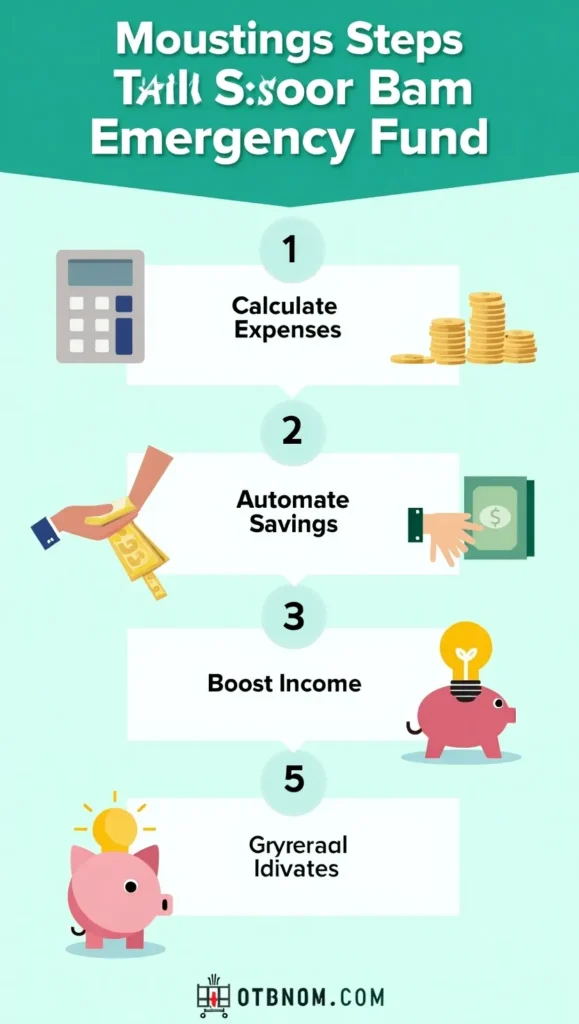The Beginner’s Guide to Building an Emergency Fund (USA, UK, Canada)
Introduction: Life is full of uncertainties. A sudden job loss, an unexpected medical emergency, or an unforeseen car repair – these can happen at any time. In such moments, an “Emergency Fund” proves to be your strongest financial backbone. This guide will explain what an emergency fund is and how you can build one to remain financially resilient and secure, specifically tailored for readers in the USA, UK, and Canada.
Understanding the Emergency Fund: Your Financial Lifeline
This section will clearly define what an emergency fund is and why it’s a non-negotiable part of sound financial planning.
What Exactly is an Emergency Fund?
- Definition: It’s a dedicated pool of money set aside exclusively for unexpected financial crises.
- Purpose: To cover essential living expenses or unforeseen costs without resorting to debt.
Why Every Household Needs This Safety Net
- Ensures Peace of Mind: Knowing you have a financial buffer reduces stress and anxiety during tough times.
- Prevents Costly Debt: Avoid relying on high-interest credit cards, payday loans, or personal loans when unexpected expenses arise.
- Protects Long-Term Goals: Safeguards your investments and savings designated for retirement, a down payment, or education from being liquidated prematurely.

Determining Your Emergency Fund Goal
How much cash should you actually save? The answer isn’t one-size-fits-all, but there’s a widely accepted guideline.
The General Rule: 3 to 6 Months of Essential Expenses
- What are “Essential Expenses”? Focus on non-negotiable costs like housing (rent/mortgage), utilities, food, transportation, and minimum debt payments. Discretionary spending (dining out, entertainment) should not be included here.
- Example: If your essential monthly expenses are $2,500 (USD/GBP/CAD), your target fund would be between $7,500 and $15,000.
Factors Influencing Your Ideal Fund Size
- Job Security: If your employment is very stable, 3 months might suffice. For self-employed individuals or those with volatile income, aiming for 6-12 months is wiser.
- Dependents: More dependents (children, elderly parents) often necessitate a larger fund due to increased responsibilities.
- Health & Insurance: Robust health insurance can reduce medical emergency risks, but a larger fund still offers extra comfort.
- Debt Load: If you have significant high-interest debt, building a smaller emergency fund first (e.g., $1,000) before tackling debt can be a good strategy.
Where to Store Your Emergency Fund: The Best Account Choices
The ideal location for your emergency fund is accessible, secure, and offers some growth potential without risk.
High-Yield Savings Accounts (HYSAs)
- Accessibility & Liquidity: Your money is easily accessible, typically within 1-2 business days, which is crucial in an emergency.
- Higher Interest Rates: HYSAs, particularly those offered by online banks, typically provide significantly better interest rates than traditional savings accounts. This helps your money grow, offsetting some inflation.
- Safety: Funds are usually FDIC-insured (USA), FSCS-protected (UK), or CDIC-insured (Canada) up to a certain limit, offering government-backed security.
- Considerations: Research online-only banks in your region as they often have lower overheads and pass those savings to you via better rates. (Do not name specific banks in the article itself, but give examples like “online-only banks” or “digital banks” generally).
Money Market Accounts (MMAs)
- Similar to HYSAs: MMAs also offer competitive interest rates and liquidity, sometimes with check-writing capabilities.
Why Avoid Risky Investments
- Market Volatility: Investments like stocks, bonds, or mutual funds fluctuate in value. You cannot risk your emergency money being worth less when you need it most.
- Long-Term vs. Short-Term: Emergency funds are for short-term, immediate needs, not long-term growth.

Step-by-Step Guide: Building Your Emergency Fund Effectively
Creating your emergency fund is a straightforward process. Consistency is more important than the initial amount.
1. Calculate Your Essential Monthly Expenses
- Action: List every non-negotiable monthly cost – rent/mortgage, groceries, utilities, transportation, minimum debt payments.
- Tip: Review bank statements or use a budgeting app for accuracy.
2. Set a Clear, Attainable Goal
- Action: Based on your essential expenses, decide on your 3- to 6-month target amount. Break it down into smaller, achievable milestones (e.g., first $1,000).
3. Open a Dedicated, Separate Account
- Action: Choose a High-Yield Savings Account and open it specifically for your emergency fund.
- Benefit: Separating it mentally and physically reduces the temptation to dip into it for non-emergencies.
4. Automate Your Contributions
- Action: Set up automatic transfers from your checking account to your emergency fund on every payday.
- Benefit: “Set it and forget it.” Consistency is key, and automation ensures you save regularly without effort.
5. Find Ways to Boost Your Savings
- Action: Look for extra income opportunities:
- Cut Unnecessary Expenses: Identify areas in your budget where you can trim spending.
- Side Hustle: Take on a small freelance project or part-time work.
- Sell Unused Items: Declutter and earn some cash.
- Windfalls: Direct tax refunds, bonuses, or unexpected gifts directly into your emergency fund.

Common Mistakes to Avoid When Building Your Fund
- Confusing it with Other Savings: An emergency fund is exclusively for true emergencies, not for vacations or new gadgets.
- Failing to Automate: Manual transfers are easy to skip. Automate to stay consistent.
- Keeping it in a Low-Interest Checking Account: Your money should be working for you, earning interest in a dedicated HYSA.
- Not Adjusting for Life Changes: Your emergency fund goal should evolve with your life (e.g., marriage, new baby, moving to a higher cost of living area).
Conclusion: Building an emergency fund is a fundamental and crucial step towards achieving lasting financial peace and stability. It shields you from unexpected financial shocks and gives you confidence and control over your money. Start today, even if it’s with a small amount. Consistency and discipline are key, and soon you’ll have a robust financial safety net, empowering you to navigate life’s uncertainties with greater ease.

